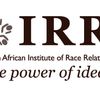
This report on transformation forms the first of a three-part release ahead of the 2017 State of the Nation Address. A summary of the report on race relations will be published on Tuesday. - blogs editor
The South African Institute of Race Relation's transformation audit, in its January issue of Fast Facts, reveals that racial transformation of the South African workplace, asset ownership and state institutions has been significant and continues to improve.
The Commission for Employment Equity's data shows that the proportion of top managers who are black has increased from 12.7% in 2000 to 27.6% in 2015, or by 117.3%. The proportion of senior managers who are black has increased to 38.8% in 2015.
Stock market ownership data reveals that levels of black African ownership increased from 14.9% in 2000 to 23% in 2013. White ownership levels have fallen by more than half to a level below that of black Africans, from 71.4% in 2000 to 22% in 2013.
Of those who have a home and have it fully paid off 84.1% are African and 7.4% are white. The extent of transformation in home ownership data is largely due to black Africans who have received free or subsidised housing from the State.
In terms of judges of the superior courts, 98.2% of judges were white in 1994. As of 2016, 64.5% are black (African, Coloured, Indian/Asian).
Despite the successes, those who advocate for an acceleration of racial transformation point out that 80.7% of all people in the country are black African. This figure is used as the benchmark to which proponents of racial 'representivity' suggest South Africa should aspire. Transformation indicators, e.g. levels of asset ownership and employment in management, if benchmarked against that percentage fall dramatically short.
The IRR argues that racial transformation should be benchmarked against the economically active and qualified population rather than the total population of black Africans.
However, the IRR argues that racial transformation should be benchmarked against the economically active and qualified population rather than the total population of black Africans. It is the economically active and highly qualified cohort who are able to be absorbed into skilled employment and higher echelons of management and leadership.
If we look at these numbers, according to the IRR, black African people account for 77.7% of the economically active population and for 70.7% of the population with a matric qualification. The numbers come down even further when it comes to the population with a post-school qualification.
Here, black Africans account for 51.4% of all people with a post-school qualification. This latter figure is seldom cited in the racial transformation debate even though it is a more realistic benchmark against which employment equity indicators should be judged.
Just 26% of black African children (who sat for the mathematics exam in 2015) obtained 40% or above. The figure for white children is 84.9%. It is not clear how continuing to enforce ever more stringent racial equity and other targets in the economy will overcome the problem of poorly performing schools.
If transformation can be said to be 'held back', that would be primarily because of failures in education. According to Gwen Ngwenya, the IRR's chief operating officer, "education levels provide the transformation ceiling."
Stricter demographic targets in the absence of sufficient advances in education will become a policy that will strangle South Africa's economic growth rate. Transformation policy for employers must continue to be informed by the available skilled population and not the total demographic distribution of racial groups.
